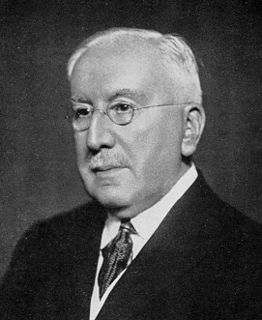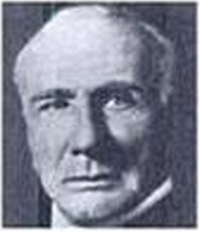Related Research Articles

The inner ear is the innermost part of the vertebrate ear. In vertebrates, the inner ear is mainly responsible for sound detection and balance. In mammals, it consists of the bony labyrinth, a hollow cavity in the temporal bone of the skull with a system of passages comprising two main functional parts:

The cochlea is the part of the inner ear involved in hearing. It is a spiral-shaped cavity in the bony labyrinth, in humans making 2.75 turns around its axis, the modiolus. A core component of the cochlea is the Organ of Corti, the sensory organ of hearing, which is distributed along the partition separating the fluid chambers in the coiled tapered tube of the cochlea.

The organ of Corti, or spiral organ, is the receptor organ for hearing and is located in the mammalian cochlea. This highly varied strip of epithelial cells allows for transduction of auditory signals into nerve impulses' action potential. Transduction occurs through vibrations of structures in the inner ear causing displacement of cochlear fluid and movement of hair cells at the organ of Corti to produce electrochemical signals.
George Edward Dobson FRS FLS FZS was an Irish zoologist, photographer and army surgeon. He took a special interest in bats, describing many new species, and some species have been named after him.

Sir Rickman John Godlee, 1st Baronet was an English surgeon. In 1884 he became one of the first doctors to surgically remove a brain tumor, founding modern brain surgery.

Sir Charles Alfred Ballance was an English surgeon who specialized in the fields of otology and neurotology.

The Hunterian Society, founded in 1819 in honour of the Scottish surgeon John Hunter (1728–1793), is a society of physicians and dentists based in London.

Jakob Ernst Arthur Böttcher was a Baltic German pathologist and anatomist who was a native of Bauska, in what was then the Courland Governorate. He worked primarily within the Russian Empire.

Sir John Ramsay CBE FRACS was an Australian surgeon, known for his association with the Launceston General Hospital.
Lieutenant-Colonel Robert Beresford Seymour Sewell CIE FRS FLS FZS was a British military doctor who served with the Indian Medical Service and served as a Surgeon Naturalist in the marine surveys, specializing on the taxonomy of copepods, and acted as an editor of The Fauna of British India, Including Ceylon and Burma 1933-1963.
Sir Victor Ewings Negus, MS, FRCS was a British surgeon who specialised in laryngology and also made fundamental contributions to comparative anatomy with his work on the structure and evolution of the larynx. He was born and educated in London, studying at King's College School, then King's College London, followed by King's College Hospital. The final years of his medical training were interrupted by the First World War, during which he served with the Royal Army Medical Corps. After the war, he qualified as a surgeon and studied with laryngologists in France and the USA before resuming his career at King's College Hospital where he became a junior surgeon in 1924.

Arthur Henry Cheatle CBE was an English surgeon who made important contributions to understanding of the anatomy and diseases of the mastoid region.

Sir George Lenthal Cheatle, was a British surgeon who made important contributions to the diagnosis and treatment of breast cancer.

Eliza Walker Dunbar was a Scottish physician and the first woman from the UK to qualify and work as a doctor.
Cochlea is Latin for “snail, shell or screw” and originates from the Greek word κοχλίας kokhlias. The modern definition, the auditory portion of the inner ear, originated in the late 17th century. Within the mammalian cochlea exists the organ of Corti, which contains hair cells that are responsible for translating the vibrations it receives from surrounding fluid-filled ducts into electrical impulses that are sent to the brain to process sound.
Arthur Logan Turner FRCSEd FRSE LLD was a Scottish surgeon, who specialised in diseases of ear, nose and throat (ENT) and was one of the first surgeons to work at the purpose-built ENT Pavilion at the Royal Infirmary of Edinburgh. During his surgical career he published a series of clinical papers and wrote a textbook of ENT surgery which proved popular around the world and ran to several editions. After retiring from surgical practice he pursued his interest in the history of medicine writing a biography of his father and histories of the Royal Infirmary of Edinburgh and the University of Edinburgh. As his father had been before him, he was elected President of the Royal College of Surgeons of Edinburgh. His collection of pathological specimens was donated to Surgeon's Hall Museum in Edinburgh..
Dr William Smith Syme FRSE (1870–1928) was a Newfoundland-born surgeon who came to fame in Scotland.

James Dundas-Grant KBE, MD, FRCSEd, FRCS was a British ear, nose and throat surgeon. He was surgeon to a number of London hospitals and surgeon to several institutions. He was regarded as a prolific writer about a variety of topics within his speciality and devised a number of surgical instruments. In addition to his clinical practice he was president of several surgical speciality societies and was knighted in 1920.
Dr Sandra Desa Souza is an ENT Head, Neck and Cochlea Implant Surgeon. She is the first Indian Fellow of the American Otological Society. She was awarded the Padma Shri India's fourth-highest civilian award in 2020. She is the first woman surgeon in the world to pioneer the Cochlear implant surgery in India and Asia in 1987. Dr. Souza was one of the first ENT surgeons in the country to perform artificial ear operations, is credited to have given the gift of hearing to thousands of patients.
References
Citations
- 1 2 Turner 1926, p. 66.
- 1 2 3 4 5 6 Cheatle 1925, p. 770.
- ↑ Changes in the London Medical Schools 1872, p. 364.
- ↑ ARTHUR H. CHEATLE, C.B.E., F.R.C.S - BMJ, p. 977.
- ↑ Chairs and Professors ... Who's who 1905, p. 132.
- ↑ "Past Presidents of the Otological Society". Transactions of the Otological Society of the United Kingdom. Vol. 8. 1907. p. iv.
- ↑ Cheatle 1925, p. 771.
- ↑ Pritchard 1880, p. 12.
Sources
- "Arthur H. Cheatle, C.b.e., F.r.c.s". British Medical Journal. 1 (3568): 977. 25 May 1929. doi:10.1136/bmj.1.3568.977. PMC 2451012 . PMID 20774704.
- "Chairs and Professors of Universities in the United Kingdom". Who's who Year-book for 1905. A. & C. Black. 1908. p. 132 . Retrieved 15 February 2013.
- "Changes in the London Medical Schools". The Lancet. 100 (2559): 364. 14 September 1872. doi:10.1016/s0140-6736(02)55055-8 . Retrieved 30 January 2013.
- Cheatle, Arthur H. (October 1925). "URBAN PRITCHARD, M.D.Ed., F.R.C.S.Eng". British Medical Journal. 24 (2(3382)): 770–771. doi:10.1136/bmj.2.3382.770-a. PMC 2227623 .
- Pritchard, Urban (3 January 1880). "Graydon's Audiphone". The British Medical Journal. 1 (992): 12–13. doi:10.1136/bmj.1.992.12-a. PMC 2239901 . PMID 20749557.
- Turner, A. Logan (January 1926). "Obituary: Urban Pritchard". The Journal of Laryngology & Otology. 41 (1). doi: 10.1017/s0022215100028425 .